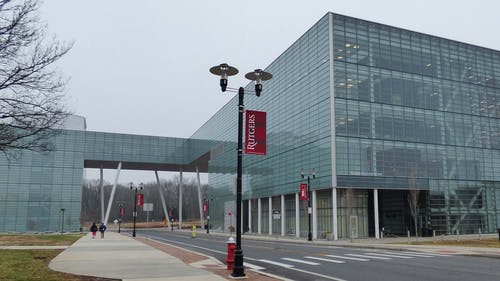An MBA degree is an investment in yourself and your future! It is therefore imperative that prospective students consider what the return on this investment might be before making a financial commitment to return to education.
Understanding this return, which we refer to as MBA ROI, can help firstly in deciding whether an MBA is the right option for you and secondly, in providing an indication into the specific programs and business schools that stand the best chance of satisfying any MBA ROI expectations you may already hold.
The US is the leading nation for pursuing education with home to universities like Harvard, Stanford, MIT, UCLA, and more. While cost is a big factor in determining which business school to pursue the course in, it should also be mentioned that the US is home to some of the best MBA programs with the best ROI.
Return on investment is a vital factor considered by students which states the salary-to-debt ratio and the amount retained. Return on investment comprises of scholarship amounts, tuition costs, and the opportunity cost of not working during the program. In 2018, the University of Wisconsin School of Business topped the list of best business schools based on ROI with its average salary at $122, 532, and debt count of $52, 562 finalizing at an ROI of 2.3x.
How is ROI of an MBA calculated?
One way to calculate the ROI of an MBA is by dividing the average salary after finishing the MBA program with the amount of debt. According to experts, two more factors should be considered while calculating the ROI – the lost salary and the debt’s interest for 10 years. Deduct the current salary from the anticipated future salary and divide the amount with the total cost. The total cost should comprise the debt, abandoned income, and also the10 year’s interest.
It is important for MBA aspirants to check out the class profiles shared by the universities where the average salaries are also shared to get an idea of their future expected compensation. It must be noted that entrepreneurs will tend to earn lesser compensation during the initial stages. There are also multiple factors that affect the post-MBA salary, the primary one being your specialization. Your MBA specialization is most likely to decide your future career path, so here is the average post-MBA salary of the popular MBA specializations in the US:
| MBA Specialization | Average Salary |
| Consulting | $101,108 |
| General Management | $92,802 |
| Operations | $91,119 |
| Marketing | $89,505 |
| Finance | $88,493 |
| Info Systems | $83,200 |
| Human Resources | $81,381 |
Payback time on an MBA degree in the US
It takes less than four years (44 months), on average, for graduates to recoup their initial investment through improved earning power. This ‘payback period’ is the average time it takes for the difference between post-MBA salary levels and likely earnings for those without the degree to cover both program cost and salary forgone. Starting salaries aside, the signing bonuses MBA graduates often receive can make a significant dent in student debt. According to U.S. News, the average signing bonus was over $30,000 for MBA graduates at top U.S. business schools that had the highest signing bonuses. For other business schools the overall average was almost $16,000.
Which Colleges Have the Best ROI in the USA?
The USA is the hub of education and pursuing a degree will open the doors to working in top-level MNCs. Furthermore, they will also get numerous scholarship opportunities. The following list shows the best business school based on ROI along with rankings. This will help you to perceive the facts about the ROI and accordingly choose your target B-schools!
| Colleges | Ranking |
| Duke University | 12 |
| George Washington University | 53 |
| University of California – Irvine | 67 |
| University of North Carolina – Chapel Hill | 20 |
| William & Mary – Mason – VA | 62 |
| Yale University (CT) | 9 |
| Stanford University (CA) | 1 |
| Haas School of Business | 7 |
| University of California – Davis | 48 |
| University of Virginia – Darden | 11 |
| Owen Graduate School of Management | 23 |
| Fordham University (Gabelli) (NY) | 80 |
| Caroll School of Management | 48 |
| Howard University (DC) | 70 |
| McCombs School of Business | 18 |
| Washington University – St.Louis | 30 |
| Harvard University (MA) | 6 |
| Eli Broad College of Business | 60 |
| Rice University (Jones) (TX) | 25 |
| Neeley School of Business | 56 |
| Goizueta School of Business | 22 |
| Temple University (Fox) (PA) | 62 |
| University of Minnesota (Twin Cities) | 28 |
| Mendoza School of Business | 30 |
| Fisher School of Business | 37 |
| Kelley School of Business | 23 |
Best Value MBA Programs in the US
Pursuing MBA from the USA will be fruitful if you are planning to pursue management and work in similar fields or be a company-founder. There are certain business schools that are considered the best value MBA programs and those should be your target.
The year 2020 saw the University of Florida’s Warrington College of Business topping the list of the best value MBA programs in the USA in Financial Times Global MBA ranking. The tuition fee for residential candidates is $26,473 and for non-residential it is $61260 which is just a portion of what the total cost of MBA programs is in the USA. Second in the ranking, Pennsylvania’s Smeal College of Business charges $26,938 and for outside students, they charge $43,296 and the graduates within three years of the completion of the course earn around $133, 483.
An MBA degree is a serious investment that can easily run you $150,000 or more, not including lost wages. Unless a generous employer is footing the bill, one of the many factors you’ll want to consider in choosing a school is the return on investment (ROI) for your degree. If you’ll be taking on debt to finance your education, calculating the ROI for each school on your list can help you determine how long it will take you to pay off that debt, given your likely starting salary after getting the degree!
Consider Scholarships to increase your ROI
Every B-school in the USA provides a hefty amount of scholarships for their students every year. Top-tier universities such as Harvard and Stanford are known for partially funding the tuition of 50% of every class at an average! So, if you are applying at top-tier schools then always try for the scholarships.
Just take a look at the annual scholarships offered by some of the top-tier MBA programs across the world:
| School | Total Scholarships | Average Grant | % of MBAs on Scholarship |
| Harvard Business School | $31.5 million | $32,000 | 50% |
| Wharton | $16.9 million* | $30,500 | 33% |
| Chicago (Booth) | $16.3 million* | $30,000 | 60% |
| Stanford GSB | $15.7 million | $35,830 | 52% |
| Michigan (Ross) | $15.4 million | $22,360 | 48% |
| New York (Stern) | $12.8 million | $26,400* | 62%* |
| UCLA (Anderson) | $12.1 million | $25,860 | 65% |
| Northwestern (Kellogg) | $11.8 million | $22,800 | 35% |
| Columbia Business School | $10.1 million | $20,500 | 46% |
| Virginia (Darden) | $8.4 million | $30,800 | 43% |
| MIT (Sloan) | $8.1 million | $28,220 | 35% |
| Duke (Fuqua) | $7.1 million | $20,950 | 33% |
| Rice (Jones) | $6.7 million | $33,320 | 94% |
| Yale School of Management | $6.2 million | $23,028 | 31% |
| UC-Berkeley (Haas) | $5.8 million | $29,060 | 50% |
| Cornell (Johnson) | $5.7 million | $12,000 | 33% |
| Dartmouth (Tuck) | $5.4 million | $27,550 | 35% |
| Carnegie Mellon (Tepper) | $5.3 million | $21,853 | 57% |
| Emory (Goizueta) | $5.0 million | $24,905 | 57% |
| Georgetown (McDonough) | $3.3 million | $30,000 | 27% |
If you are someone who is depending on a scholarship to fulfill their international MBA dreams, then take a look at this video as I provide some key tips regarding how to land a good scholarship amount in top-tier MBA programs –





